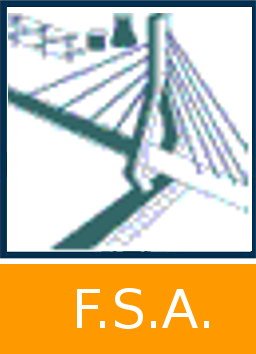Master thesis : Study on the Vibration of Corrugated Cargo Tank Bulkheads
De Oliveira Antonio, Victor José 
Promoteur(s) : Mumm, Holger
Date de soutenance : 15-sep-2022 • URL permanente : http://hdl.handle.net/2268.2/16049
Détails
| Titre : | Master thesis : Study on the Vibration of Corrugated Cargo Tank Bulkheads |
| Auteur : | De Oliveira Antonio, Victor José 
|
| Date de soutenance : | 15-sep-2022 |
| Promoteur(s) : | Mumm, Holger |
| Membre(s) du jury : | Kaeding, Patrick
Taczala, Maciej |
| Langue : | Anglais |
| Nombre de pages : | 86 |
| Mots-clés : | [en] Vibration [en] Corrugated [en] Bulkhead [en] Fatigue |
| Discipline(s) : | Ingénierie, informatique & technologie > Ingénierie mécanique |
| Public cible : | Professionnels du domaine |
| Institution(s) : | Université de Liège, Liège, Belgique Universität Rostock, Rostock, Allemagne |
| Diplôme : | Master : ingénieur civil mécanicien, à finalité spécialisée en "Advanced Ship Design" |
| Faculté : | Mémoires de la Faculté des Sciences appliquées |
Résumé
[en] Cargo tankers corrugated bulkheads are constantly subjected to excited vibration due
to propulsion system components, such as engines, shafts and gear boxes, and severe
vibration can be observed if the bulkheads vibrate in resonance with the excitation frequency.
Added to it, the influence of the cargo density and the filling level at the cargo tank can lead
to a considerable variation of the natural frequencies, shifting them closer to the excitation
frequency and leading the system to a dangerous resonance state.
In addition, vibration induced by the propulsion system is known for an extremely
high number of load cycles in a short period of time. In a state of resonance, the effects of
such cycles combined with huge amplitudes may negatively affect the design fatigue life,
leading to fatigue induced cracks.
In the course of this study, two main questions are supposed to be answered. First,
how to design a proper corrugated cargo tank bulkhead in order to minimise resonance risks
due to the excitation frequencies generated by the propulsion system? And second, to assess
at which vibration levels fatigue damage is likely to occur. For that purpose, a parametric
Finite Elements model is developed in order to analyze how the natural frequencies vary
according to the variation of dimension parameters, cargo filling levels and cargo densities.
In addition, the model is refined at the stress concentration areas for a fatigue strength
analysis in order to determine the vibration levels and the stress range for which the fatigue
damage is likely to occur.
Fichier(s)
Document(s)

 Master_Thesis__URO_DNV__internal_version.pdf
Master_Thesis__URO_DNV__internal_version.pdf
Description: Thesis, full report
Taille: 12.32 MB
Format: Adobe PDF

 Master_Thesis__URO_DNV__executive_summary.pdf
Master_Thesis__URO_DNV__executive_summary.pdf
Description: Thesis, executive summary
Taille: 2.54 MB
Format: Adobe PDF
Citer ce mémoire
L'Université de Liège ne garantit pas la qualité scientifique de ces travaux d'étudiants ni l'exactitude de l'ensemble des informations qu'ils contiennent.


 Master Thesis Online
Master Thesis Online



